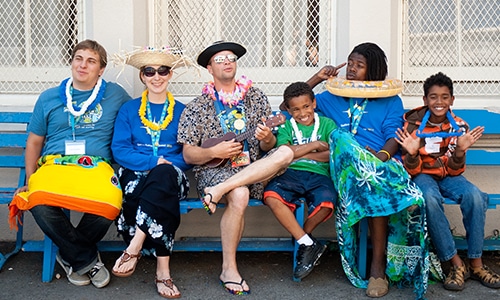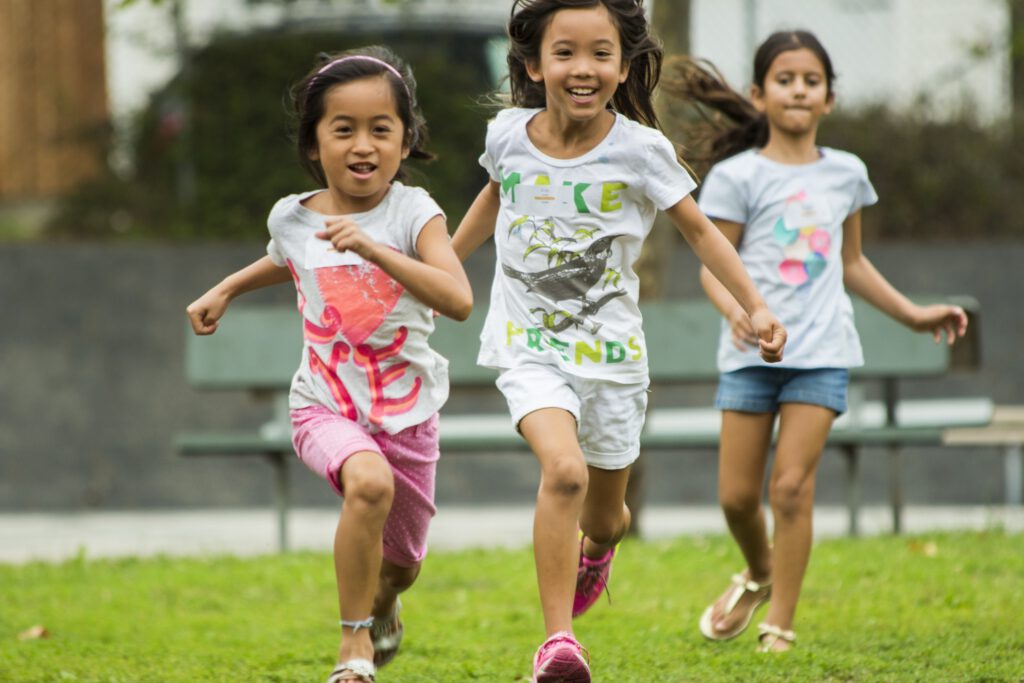Parents are so many things to their kids: guardians, caregivers, cheerleaders, disciplinarians, schedulers, chauffeurs. With all we do, it can be hard to remember that we’re also our kids’ most influential teachers. Every day, whether we’re conscious of it or not, we’re teaching our kids what kind of people to be.
Obviously, we want our kids to be wonderful human beings. But what exactly does “wonderful” mean? And how do we help them become it? Companies dedicate full weekend retreats to creating values to guide their employees—why wouldn’t we be that intentional with our kids? Since your actions and words have power, it’s time to give some thought to what you want to teach.
Here’s a framework we recommend to guide your thinking:
1. Can you name the character traits you care about?
Even if you have a good general sense of the traits you value, coming up with the words to articulate them can make you a more intentional, effective teacher. If you need a bit of inspiration, you can:
- Consider what characteristics you value most in the people who are important to you.
- Ask friends and family (or your kids themselves, if they’re old enough) what qualities they think are important.
- Think about books, doctrines, fictional characters or famous figures that inspire you. What traits do they have that you admire?
- Browse around online at lists of character traits or take a peek at Gallup’s Clifton StrengthsFinder.
- Get some distance from the present and think about your kids as adults. What traits do you most want them to have? (This can help broaden your perspective from things that feel like more of a focus now, but may be less important in the long run.)
After you’ve finished brainstorming, narrow your list to 3 to 5 traits. It’s nice to have enough to show kids that they can be a range of things (courageous and thoughtful, confident and kind) but not so many that it’s tough to focus meaningfully on all of them.
2. Make them specific
It’s one thing to decide that “kindness” is a quality you want your kids to have. It’s another to be able to describe what kindness looks like to you.
Try coming up with 2 – 4 “I” statements for each trait on your list that makes it personal and actionable. How do you want your kids to see this trait in themselves?
For example, in the case of kindness, you might want them to be able to say, “I offer to help when someone is having a hard time,” or “I do my best to really listen when I’m talking to someone.” At Galileo camps, we teach kids to be courageous. The “I” statements we use to define what it means to be courageous are “I freely share my creative thoughts,” “I stretch myself to try new things” and “I embrace challenges.”
Whatever the trait, there are dozens of ways to define it. Pick a few that capture the nuance of what you’re trying to nurture in your kids, and write them down.
3. Make them explicit
Once you’ve settled on your traits and “I” statements, give them a prominent place in your home and your daily lives:
- Spell them out by writing down your list of traits and “I” statements and posting them somewhere visible. Whether it’s as simple as a post-it on the fridge or as elaborate as a framed illustration, this will help everyone remember and reference what the family is focused on.
- Incorporate them into your lives through books, TV shows or movies that showcase characters that have the traits you aspire to. Talk about how those characters embody each trait and then make connections between the characters and your own circumstances.
- Say them out loud. For example, every day at school drop off, leave your kids with a reminder to “have a big heart!” Or before bed, say “goodnight, my amazing listener.”
4. Put them into practice (Or: Choose the right cape!)
Think of these traits as your kids’ superpowers. They have to learn when it’s time to put on their “kindness cape” (before a play date, perhaps) or when they need their “confidence cape” (maybe before trying a new activity).
If, for example, you’re heading to a soccer game, consider what trait your kid will need to rely on most, and coach them in anticipation. If they’re likely to lose steam in the third quarter, you can have a conversation before the game about persistence and what it looks like to keep going even when it’s hard.
Once they learn how and when to wield their superpowers, they’ll be able to access the tools they need when things get tough.
5. Recognize them in your kids
It’s so important to notice out loud when you see your kids using one of the traits you value. Recognition reinforces the behaviors and provides an authentic springboard for meaningful conversation and reflection. Tell them that you noticed their persistence throughout the whole soccer game, for example, and ask how it felt and what happened because of that persistence.
Or tell them that you noticed them offering to help a friend, and how lovely that act of kindness was. Ask them how it felt to be kind, and about other situations where it might be important to show kindness.
When they see how these traits benefit them (and others) in different situations, they’ll start to make them their own, becoming human beings who see themselves as—and really are—kind, persistent or brave.
Above all, Don’t try to be perfect
This is an exercise where it’s easy to let the perfect be the enemy of the good. Deciding on and developing the qualities you want your kids to have can feel like a weighty and potentially overly academic endeavor. But don’t let that keep you from trying. Choose one trait to start, try it for a month and see how it goes. Make room for your choices and practices to evolve as you learn what feels right for your family and as your kids get older.
None of us is a perfect parent or teacher, but the more clearly we’re able to see the people we want our kids to be, the better their chances of becoming them.



